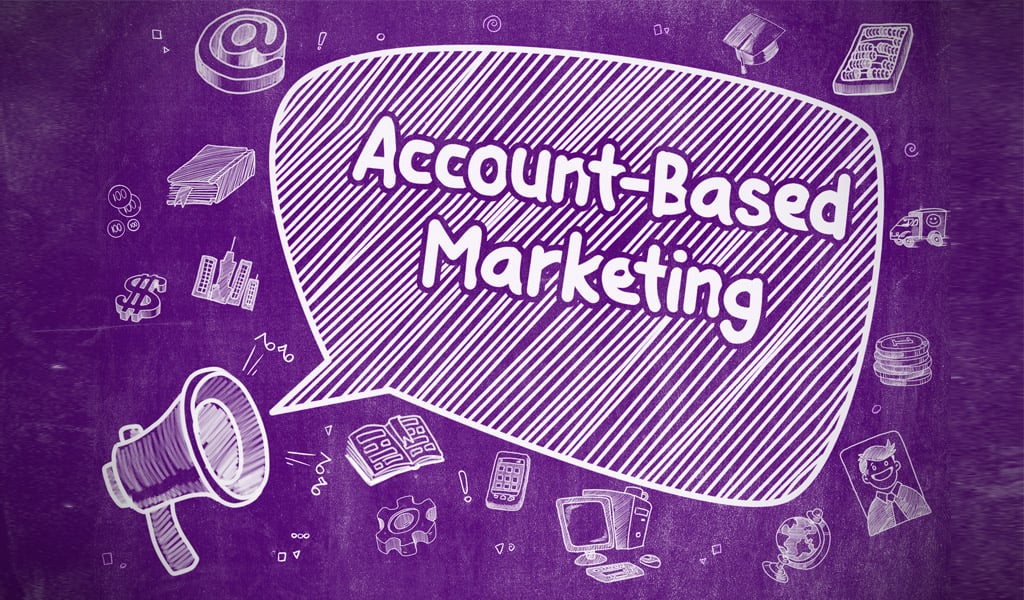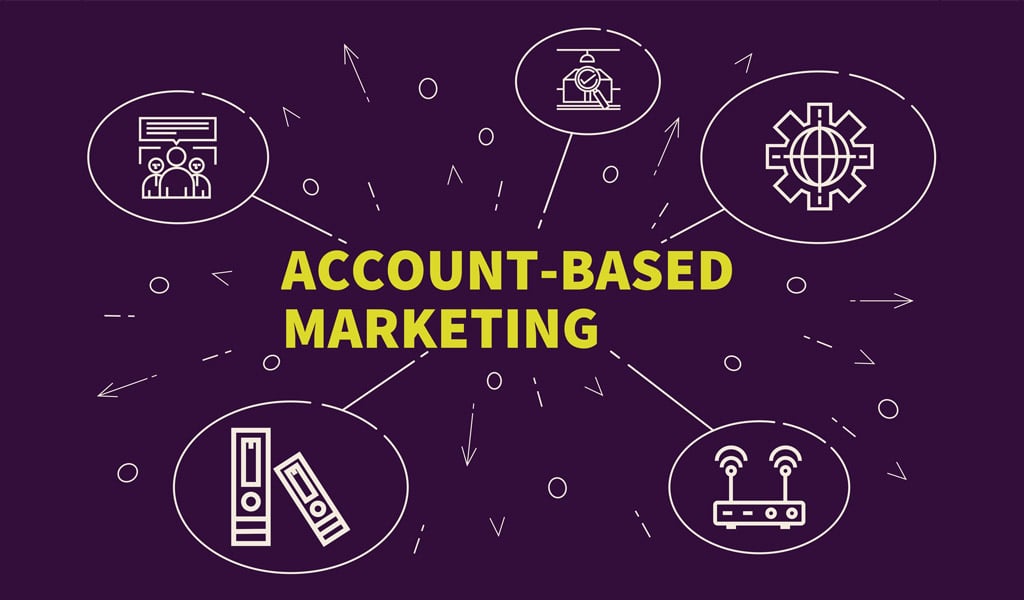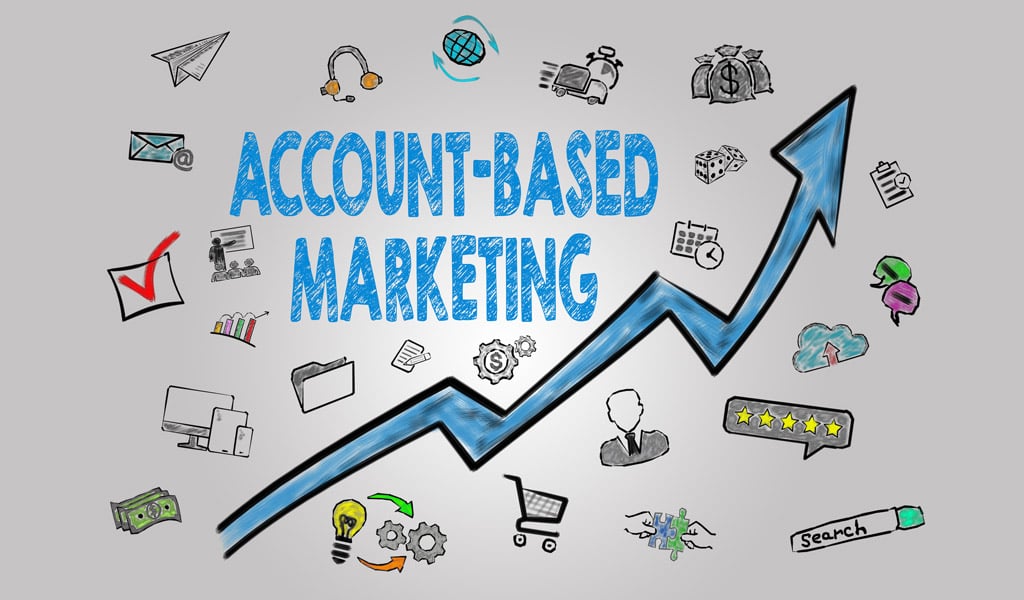
Account-Based Marketing (ABM) has been trending for the last few years and is becoming more popular every day. Why? According to research by ITSMA, around 85% of marketers who measure ROI describe ABM as delivering higher returns than any other marketing approach. Another study found that 70% of B2B markets are scaling up ABM programs and even have dedicated ABM employees. Put simply, ABM is driving positive results, and businesses everywhere are starting to notice. But what exactly is ABM? And how do you get started? Here is our ultimate guide to ABM.
What is Account-Based Marketing (ABM)?
Account-based marketing is a strategic approach to marketing that focuses on targeting marketing communication at an account level, rather than using broad B2B marketing tactics. ABM has gained a lot of traction in the last couple of years in B2B companies, and we expect this trend to continue.
Why B2B, not B2C?
ABM is less doable in Business to Consumer-based (B2C) businesses due to the scale and scope of customer interactions. Essentially, in B2C marketing, it can be wasteful to focus too much time and resources on specific targets because a broader approach is often more lucrative. Being too specific in B2C can also harm your progress because it can lead some customer segments to believe your product isn’t meant for them; it’s meant for the group you’re heavily targeting. Your product or service can become niche unintentionally, and there are only a few places where this is a good thing.
However, in B2B, being specific in your strategy often hugely pays-off. The revenue each account brings in can be considerable in size, and so giving extra attention to each target makes sense.
ABM is Focused
Here are the three core components of ABM:
- It’s a marketing strategy.
- It’s focused on key accounts.
- It requires the marketing team to have close relationships with the sales team (collaboration).
When we say ABM is focused, we mean it has specific goals and objectives rather than broad ones. For example, a company using an ABM strategy might say things like:
“We want to target the top 30 companies who focus on B2B SaaS.”
“We want to target the top 15 online-only banking companies”.
They will have a list of each company they want to target and work on each account thoroughly. In a more traditional marketing approach, the marketers might say something like, “we want to target mid-size software businesses.” In ABM, you can name the accounts before you even begin. In traditional marketing strategies, you try to fish for customers in a market segment.
ABM campaigns result in significantly higher ROIs than traditional marketing campaigns. This makes sense because the relevance of the campaign is higher. Let’s say you are targeting IBM, Coca-Cola, or another whale of a company. When you plan and execute your strategy, every single communication and interaction is going to be tailored to that company. You’re going to remove anything that doesn’t apply to them and be precise in what you can help them with because you have thoroughly researched their company. With a traditional marketing approach, you’re more likely to use generic messaging that will work for a range of different companies.
Should You Use ABM?
Before we tell you how to execute an ABM strategy successfully, you first need to determine whether ABM is right for your business. As discussed in the last section, ABM is more effective for B2B companies, so this should be the first criterion. If you have a B2B company, then ABM is something you should heavily consider.
But there’s a little more to it than just being a B2B company. Typically, ABM is practiced on enterprise-level accounts that have over 1000 employees. Of course, this doesn’t mean you shouldn’t try ABM if your accounts are smaller than this, but it is something to think about. The accounts ABM marketers usually go after are high-value accounts, and this typically also means they are large companies. Small companies will have less money to spend on your services, and targeting them might not be cost-effective.
With that said, if you’re intrigued about ABM, and you have a B2C company or usually target small businesses, then go ahead! We’re really just talking about the places ABM is most common, but that doesn’t mean it can’t be effective elsewhere.

Benefits of Account-Based Marketing
Delivering a Consistent Customer Experience
Today, clients expect a consistent customer experience, and ABM helps achieve this goal. Account-based marketing campaigns are a long-term process that lasts several months or even years. They are also deliberate – there is little room for guesswork, and each step is carefully planned. When you develop long-term relationships like these, you focus more intently on consistency. Once you realize what works for a particular account, you want to keep executing the same strategy, only making changes when it adds to the experience.
Sales and Marketing Collaboration
Cross-team collaboration is extremely important for organizational growth. When there’s more collaboration, communication, and transparency between teams, you ensure everyone is working towards the same goals.
Adding Value and Being Valuable
ABM is a more personalized marketing strategy, and this means that you develop stronger relationships that will make your clients feel valued. Because you’re taking a focused approach, you have more time to spend listening to your clients, empathizing with their situations, and can come up with the best solution every time. This adds value to their business and also makes you valuable to them. You become part of their success journey.
Faster Decision Making and Boosted Revenue
When you develop deeper relationships, you gain the trust of your clients. This means that you can make speedy decisions and push your buyers through the customer journey faster.
Improved Tracking and Clearer Results
With traditional marketing strategies, it can often be challenging to determine exactly how successful the strategy was. Sure, you can see that sales increased or that a particular segment felt more compelled to buy. But you’re often left in the dark about why or how it was successful and whether you were just one step away from even greater success. With ABM, it’s easy to identify your success. There are fewer metrics to track, and the line of open communication you have ensures that you can get constant feedback and always improve.
Improved ROI
The personalized nature of ABM makes it extremely cost-effective. You can expect higher ROIs for putting time and effort into personalization and continued contact. Instead of using a broad approach, you instead focus on the accounts you are most likely to convert or most likely to bring in high revenues if you do. According to Altera Group, 97% of businesses that use ABM saw higher ROIs when compared with alternative strategies.

4 Steps to Effectively Implement ABM
1. Find Your Strategic Accounts
Marketers are already familiar with defining customer personas, but ABM requires a more company-level approach. You’re marketing to the organization as a whole, rather than a type of person. To find your strategic accounts, you need to do the following:
- Determine which organizations bring in the largest monthly recurring revenue.
- Define the industry, the size of the company, location, profit margin, and upsell opportunity.
2. Ensure That Your Sales and Marketing Teams Are Aligned
Both the sales and the marketing team are crucial parts of any business, but they can’t work independently, at least, not if you want to get the most out of your ABM campaign.
A successful ABM campaign requires that the sales and marketing teams align in their goals and communicate freely. Here are some tips on getting this collaboration started.
Set up an Initial Meeting
In this meeting, you should discuss things like:
- Who is responsible for researching the ideal account. Who needs to weigh in on this? How often do you need to meet with the sales or marketing team to ensure that both are happy with the target account?
- What is currently automated? Is there potential for more automation? What parts of the marketing or sales communications should not be automated?
- Who are the key points of contact in each team?
How to Get the Sales Team on Board
The leading blocker to effective collaboration is whether both sides can see the value in something. It’s often incorrectly assumed that whoever reaches out first stands to gain the most from the partnership. With ABM, this isn’t true. Both the marketing and sales teams can see huge success from this strategy, but you have to prove it for the other team to believe it. It’s estimated that when sales and marketing teams align, leads are 67% more likely to become customers. Another study found that companies with tightly aligned marketing and sales teams experience a whopping 36% higher customer retention rates.
3. Find the Right Content
Finding the right content is vital to the success of your ABM campaign. Personas can change dramatically between accounts, and your content should reflect this. As we discussed earlier, your communications must be personalized for your strategy to be effective. It would be a good idea if both the sales and marketing teams sit down and go through each type of content you currently use and decide whether it can be applied to your new campaigns. Don’t try to make something fit if it doesn’t fit.
It’s also a good idea to integrate ABM into your multichannel strategy. Often, the sales and marketing teams will use different channels or use some channels more than others. You should sit down and look at your multi-channel strategy and work through the following checklist.
- Do different accounts have different communication preferences? How can you factor this in?
- What content and channels do you intend to utilize at each stage of the buyer journey?
- How do you ensure that you won’t send out the same communication twice? Do you have a multi-step plan that you will executive on? Or is communication more ad hoc?
4. Define Who’s On Your Team
The “M” in ABM is a little misleading. It stands for marketing, but in reality, ABM isn’t just a marketing initiative. ABM is an organizational initiative, and it requires buy-in and collaboration with several business teams. It would be best if you defined who needs to be part of your strategy. We’ve already established that the sales and marketing teams are crucial components, but what about other business areas?
- Operations: The operations team supports your existing technologies like marketing automation and CRM and is also responsible for managing new technologies you implement. Make sure they know what metrics you want to track and what their role is.
- Finance: The finance teams love ABM because it’s an extremely focused approach to getting revenue from a specific account or set of accounts. Make sure you understand what the finance team expects to see and the level of communication they expect. Doing this successfully could make or break your future ABM budgets.